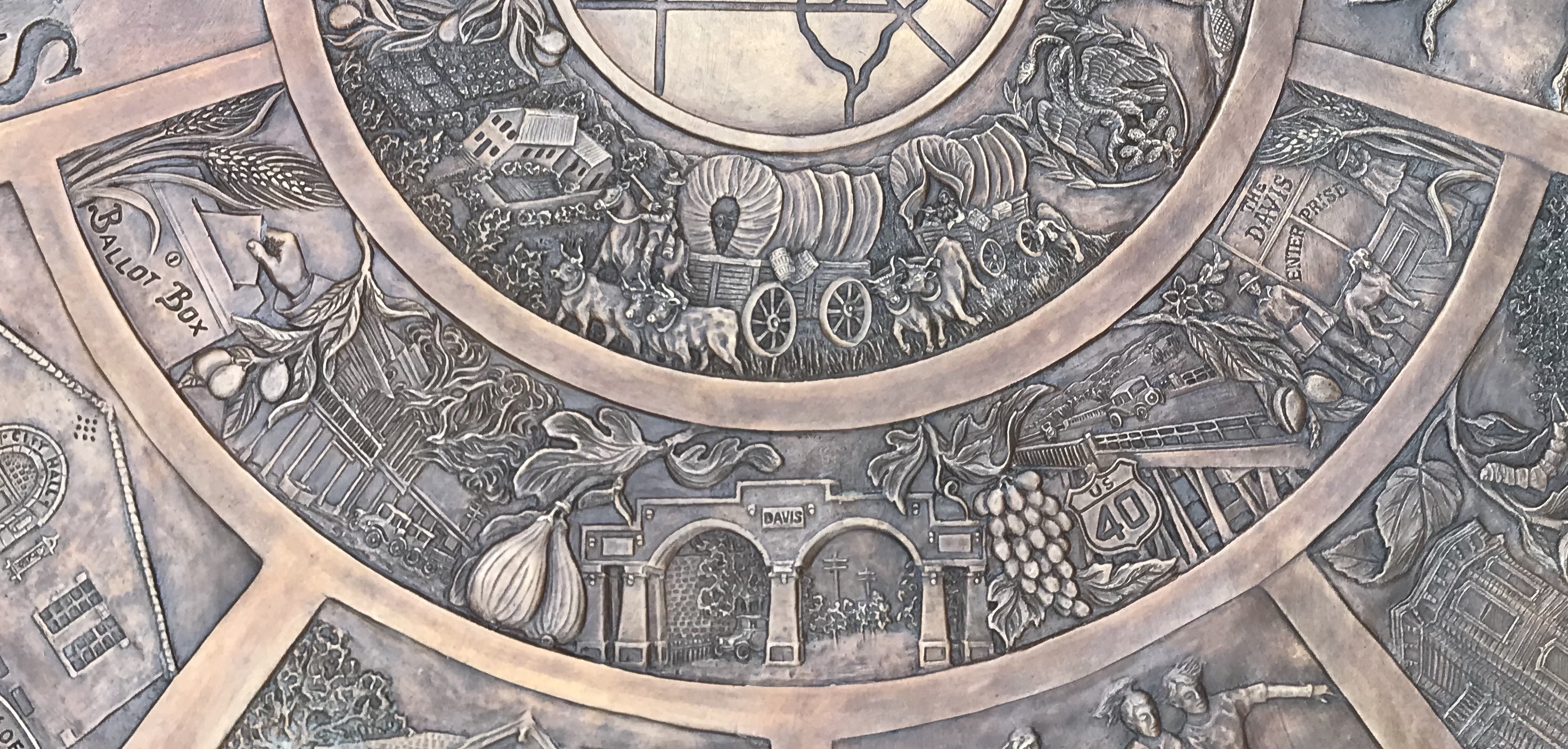
• After the University Farm came to Davis, the Davis Enterprise and the Post Office dropped the “ville” from our name because it was deemed too hokey for what was destined to be a sophisticated city.
• The Yolo causeway was completed in 1915, which not only connected Davis to Sacramento, but also resulted in the decision that the Coast-to-Coast Lincoln Highway, Historic Route 40, would run through Davis California, which was considered a boon for commerce and development. This Highway, and the later Interstate 80, elements of our "Crossroads", have special significance, because, arguably, much of the influence Davis has had in California and beyond is partly attributable to our proximity to the seat of state government. Many ideas that were first conceived and implemented in Davis, have been amplified through the close ties our city has had to the Capitol.
• The Davis Arch, completed in 1916, was deemed by the mayor at its dedication to be a symbol of the connection between the city and the university, a connection that endures, and is sometimes referred to as the “town and gown” relationship.
• The Great Fire of 1916 destroyed much of the downtown, and underscored the need for city services, including a fire department and a municipal water supply,
• The city voted to incorporate in 1917. An interesting fact is that 41% of inhabitants voted, which at first glance might not seem very impressive, but, taking into consideration the fact that women couldn’t vote and some of those inhabitants were children, it actually reflects quite a respectable degree of civic engagement.